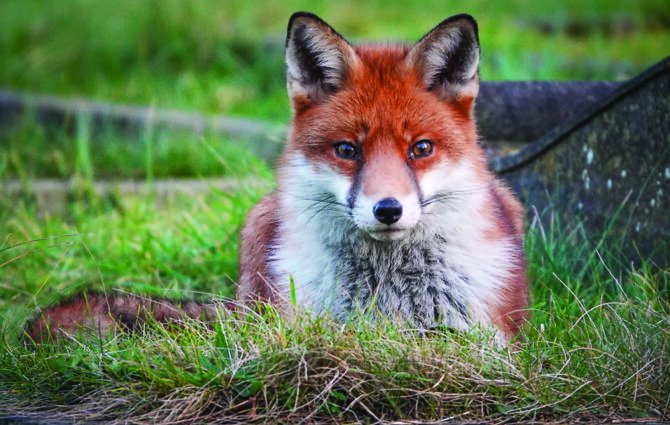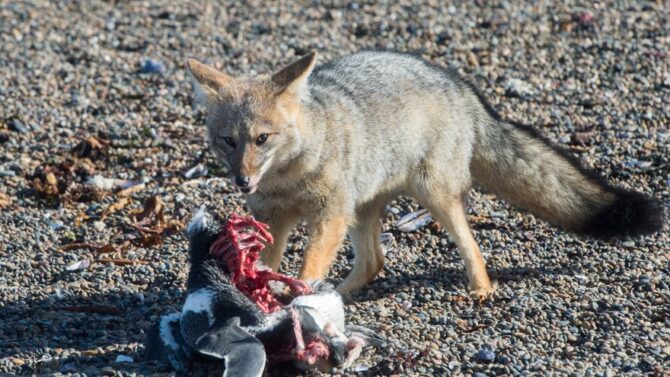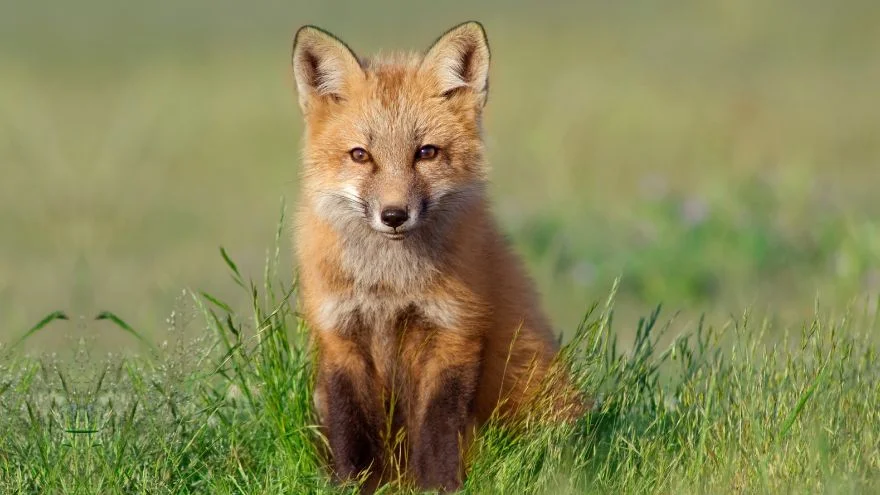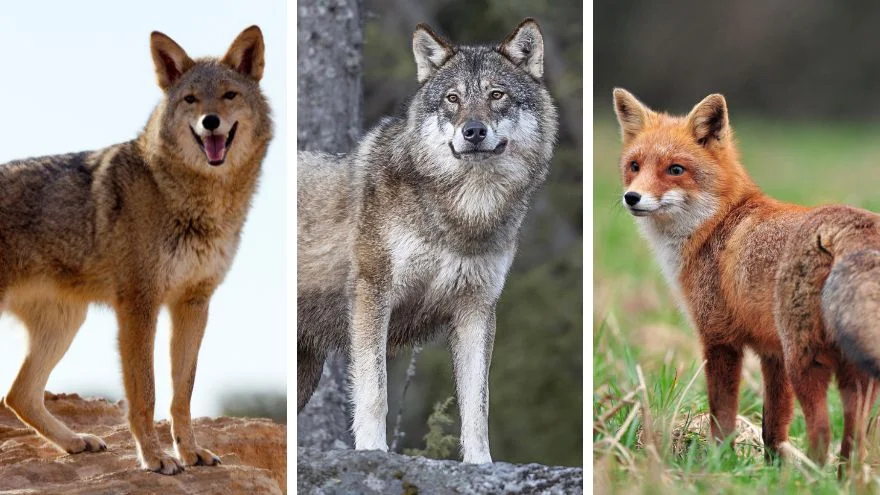Foxes are omnivorous mammals, smaller than many other animals in the Canidae (dog) family.
A common Canid, this wild dog species has not lost its spot in folklore and human culture. It is not considered highly dangerous, but it’s still a wild animal that can even become a pest on occasion.
These little canids have a wide range than some of their relatives, with the red fox species being the most distributed of all.
Their existence in every continent, added to their cunning behavior, all contribute to their prevalence in human folklore.
This profile will explore the reason they are part of folklore, as well as many other facts you’d need to better understand the canid.
Scientific Classification
- Kingdom: Animalia
- Phylum: Chordata
- Class: Mammalia
- Order: Carnivora
- Family: Canidae
- Subfamily: Caninae
- Genus: Vulpes
- Binomial Name: Vulpes vulpes
Characteristics
- Length: 16 to 33 inches
- Weight: 11 to 24 pounds
- Venom/Poison: No
- Habitat: Parks, woodlands,
- Range: Worldwide
- Diet: Omnivore
- Life span: 3 to 11 years
- Gestation Period/Life Cycle: 49 to 61 days
- Conservation status: Near Threatened
5 Interesting Facts About Foxes
1. The fox can adapt to cold weather
Foxes have adapted themselves to the snow, and though they are not found in Antarctica, arctic species can survive in arctic regions. Their bodies are designed to protect them from the cold.
They also have short legs, muzzles, and ears, all of which conserve heat. There’s the deep fur too which protects the fox from the cold.
This animal can also locate prey in the snow, an example of which is the mouse. It can determine where the mouse is, even if the latter is hidden in the snow at the depth of 3 feet. This helps it feed even in unfriendly weather.
2. It is always a cunning character in folklore
Foxes are playful, which easily translates to cunning behaviors. They can steal objects at a whim or put up some other mischievous traits that could be fun to watch.
This has earned them the title of cunning animals in western folklore. They would be seen trying to defraud another animal, an image that’s consistent with its behavior.
Asian folklore depicts foxes as familiar spirits, but even in this culture; they also have mischievous traits.
While some stories show them as sacred and mystical, there are instances of these animals tricking people and taking on the shape of a woman.
3. Though a member of the dog family, foxes behave more like cats
The fox is a canid, but some of its traits make us wonder if it shouldn’t have been a feline instead.
It sees well under dim light, can climb trees, stalk its prey with whiskers like cats, and even move silently. The Grey fox species can retract its claws, similar to cats.
This is a comparison, however, and doesn’t change the classification of foxes as canids. The red fox is also considered more dog-like, while species like the grey fox are catlike examples.
4. They make up to 40 different sounds
You’d imagine that foxes would have a particular sound, much like many other animals. However, they are not limited to one sound. They have up to 40 sounds, some being more common than others.
The most noticeable sound is a howl which can be frightening up close. They also chatter, a sound known as gekkering.
Foxes use their sounds for different reasons, including communication and settling disputes. They can also defend their territory by using these sounds to warn intruders.
5. Foxes have a good sense of hearing
Foxes have a strong sense of hearing. Some people even claim that these animals can hear a ticking watch from 40 yards. Whether that’s true or not, the impeccable hearing of the fox is a fact.
It is with their ears they pick up underground prey. They also use the earth’s magnetic force to locate prey, making them good predators.
General Description
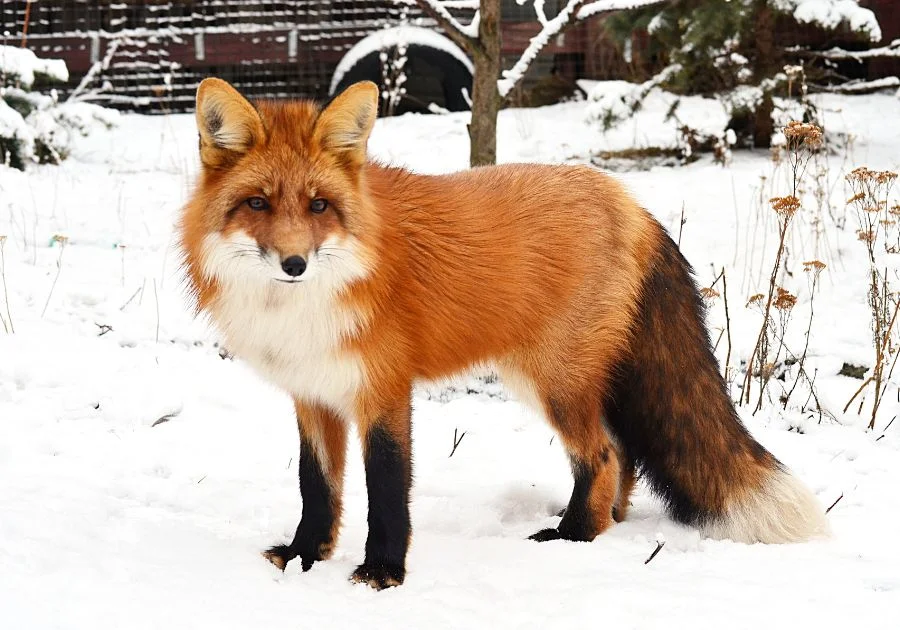
Foxes can be described as having bushy tails, a long snout, upright ears, and a flat skull. and a small figure.
Its length falls between 16 to 33 inches, with a weight that comes between 11 and 24 pounds.
It is smaller than other canids like the gray wolf, but many species may be bigger than canids like the Raccoon dog. The smallest canid is a fox species, though, named the fennec fox.
The species differ in terms of length, fur color, and density of the said fur. Some coat colors are white, black-and-white, red, tan, or brown.
The coat type of a species usually depends on the habitat it dwells in. For example, the fennec thrives in desert areas and their coat is short. By contrast, arctic species have thicker coats.
There are about 12 different species in the world today. Some of them are:
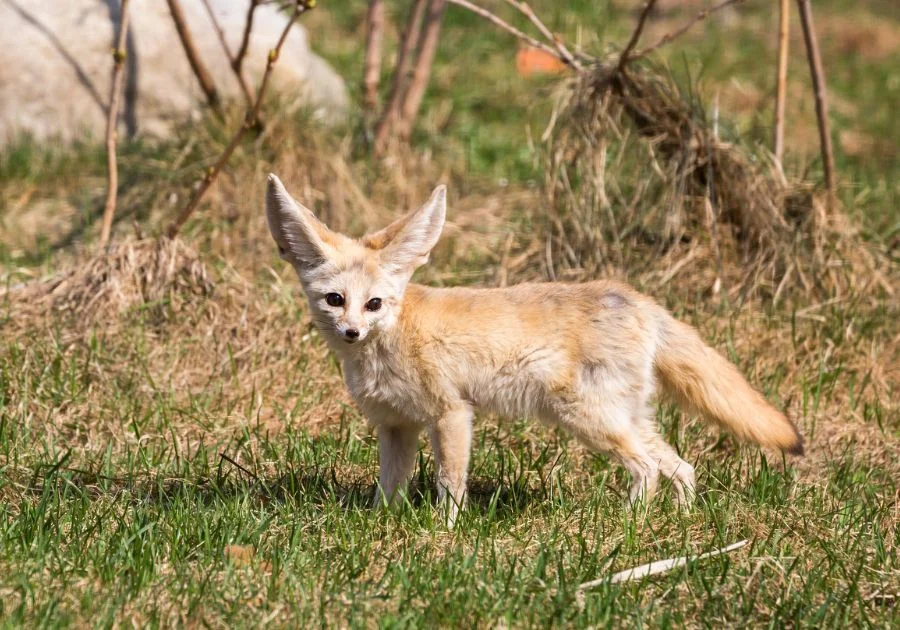
- The red fox is the most popular and widespread. It is also the largest fox species. Though termed ‘red’, it can also be colored reddish brown.
- The fennec fox, the smallest of all, is often found in deserts. This includes the Sahara desert and Arabian desert. It digs holes in the sands where it lives.
- The arctic fox is also known as the snow, polar, or white fox. It has adapted to life in colder regions, and it has the coats to show for that.
- The pale fox can be found in the Sahel regions of Africa, and the coat makes it blend with the desert areas. This is a good tool for camouflage.
- The Blandford’s fox is also known as the Afghan, the royal, and the dog fox. You can find them in Asia and the Middle East.
- The cape fox lives in Southern Africa and is among the small species. Their dietary needs reflect their size as they feed on small animals and fruits.
- The corsac fox stays in Central Asia, where it lives in deserts and steppes. They can stay without food for a long time, their survival tactic.
The remaining species are the Tibetan sand, the Swift, the Kit’s fox, Ruppell’s, and the Bengal.
Distribution And Habitat
Foxes can be found all over the world except Antarctica, with each species living on a particular continent. However, they aren’t considered as ‘Least Concern’ by the IUCN.
They are Near Threatened due to human activities (more on that later). The red fox is widespread because it has a high number of subspecies.
The habitat of this canid varies according to the species. They can live in deserts, woodlands, parks, steppes, etc.
Diet
Both omnivorous and opportunistic, the fox eats almost anything it can find edible. Its favorite prey seems to be rabbits, but that depends on the species.
They also hunt down mice, birds, amphibians, and insects. Their opportunistic nature turns them into pests around humans as they are known to steal poultry and livestock from farms.
They also get nutrients from plants. Fruits, berries, and acorns are some examples. However, they are hunters and feed more on animals than plants. Foxes hardly attack humans and the few cases are not fatal. Your poultry is more at risk than you are.
Reproduction and Mating Process
Foxes have a particular mating time. which usually falls between January and February.
The reproduction period usually falls between late December (when the estrus cycle in females starts) till March or April when the female delivers. She can deliver up to 11 pups, but the average is 6.
Little ones come out blind and dependent on their moms. The blindness lasts till 9 days, then they start to see. They move to the entrance of the den in 35 days, which is 5 weeks.
In the next 7 weeks after that, they get weaned. The next step will be to accompany their parents on foraging trips, after which they set out on their own to gain independence. The male and females become sexually mature at 10 months.
Foxes can be monogamous, especially as they live in small groups. The dominant male often mates with the dominant female, and so forth, with the monogamous mating lasting for life.
However, not all species are monogamous. Some mate with more than one partner. The grey fox is an example of a monogamous species, while the red fox may not practice it.
Either the male or female red fox can mate with many partners. When the females are polygamous, they opt for one male to start a family with.
When raising the young, a couple can be helped out by younger females that haven’t bred yet. These females act like nannies.
Predators and Threats
Foxes are not apex predators, so they can be prey to different animals. These are usually bigger mammals that can easily subdue a fox and turn it into their next meal. Some birds can also hunt them.
Because they tend to be solitary (except when mating), the little canids are easy targets for their predators.
Animals that eat our canid friends include Mountain lions, bears, eagles, leopards, owls, and bobcats.
Other wild dogs, like coyotes and wolves hunt down foxes, and there are also cases of cannibalism. Some foxes hunt down and kill their fellows, but this usually happens in extreme cases of starvation.
The biggest threats are humans, and it is generally not a good idea to kill foxes in your environment.
The controversial sport of fox hunting led to the decline of the population, and in many places, the sport is illegal when you use a pack of dogs.
Behavior
Foxes are friendly animals, sometimes even toward humans. This trait is what fuels their mischievous nature, making them sometimes turn into a pest. Fortunately, they hardly attack humans.
Besides the mating and reproduction periods, many species live a solitary life. They hunt and live on their own.
They use their multiple sounds to communicate and deter intruders, and they also protect themselves from predators through methods like camouflage.
Foxes are nocturnal, which is why they can see at night. Daytime is when they sleep, though some species may be found active during the day. Daytime foxes are usually in captivity or living in urban areas.
Despite their friendliness, remember that foxes are still wild. The destruction of their habitat has brought them closer to humans, and the wariness they use to have has since been reduced. This increases the chances of them flipping out on a stranger.
Feeding them is not a good idea, and you shouldn’t try to pet one too. It is best to observe from a distance.
Male vs Female
The male is called a dog fox while the female is termed a vixen. This is the first distinction, but you would need to see some physical differences to know which is a dog fox and a vixen.
A core physical difference is the genitals. We don’t recommend you touch one, but one can determine the sex by flipping the creature over.
Dog foxes have skin and fur covering the penis, along with the testis, which becomes observable during the winter. The females don’t have obvious genitals, but they have nipples when mature.
The males of some species like the red fox are slightly bigger than the females, but the difference is subtle. Males also have larger teeth, though even this is subtle.
Generally, there are no obvious differences between a dog fox and a vixen. Only close observations can help you detect the sex.
Frequently Asked Questions
Are foxes cats?
Some species behave a lot like cats. However, foxes are not classified under the Felidae family. They are canids alongside gray wolves and coyotes.
Can a fox be domesticated?
There have been attempts to domesticate the fox, and some are in captivity. However, it is difficult to keep them as a pet like you would a domestic dog. Foxes thrive better in the wild, and even those that live in urban areas have wild instincts.
Are foxes deadly?
Foxes are not considered dangerous or deadly. On the contrary, they are friendly and hardly attack humans. Foxes are more likely to go after livestock.
Do foxes trust humans?
Foxes are generally wary of humans, but those with more contact tend to lose that wariness, especially if they get fed by people.
Conclusion
The less satisfactory status of foxes should make us more sensitive to their declining population.
If you have foxes in your yard and they are becoming nuisances, you can find easier ways to get rid of them other than killing them.
Just like any other animal, foxes play a strong role in the ecosystem. They are also not dangerous, though you should keep your distance in case it has rabies.
